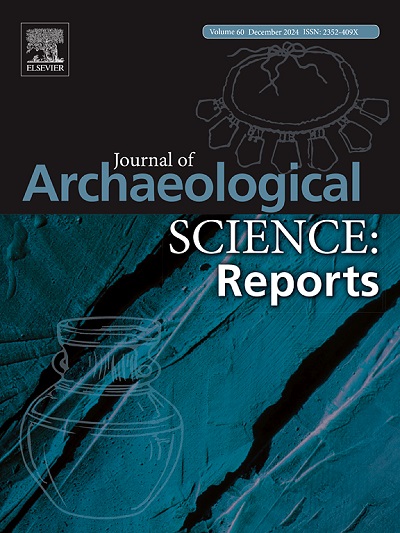用生物地球化学方法研究土耳其新石器时代特佩西克-Çiftlik 的亚成体饮食和断奶过程
IF 1.5
2区 历史学
0 ARCHAEOLOGY
引用次数: 0
摘要
Tepecik-Çiftlik 是一个新石器时代的聚居地,位于安纳托利亚中部的卡帕多西亚地区,在现代图尔基耶的尼德省境内,它对于帮助我们更好地了解新石器时代的社会行为和人类流动性以及不同群体之间的关系至关重要。为了研究新石器时代人类和动物的饮食习惯、生存方式以及社会内部的差异,我们对新石器时代的人类和动物进行了稳定的碳氮同位素比值分析。此外,还对 21 个亚成体进行了稳定碳和氮同位素比值分析采样,以研究亚成体的饮食、补充喂养以及断奶过程中停止母乳喂养的情况。之前利用同一人群骨磷灰石中的硒/钙比值进行的研究对断奶过程的同位素调查进行了补充。取样亚成体的 δ13C 值范围为 -19.8 ‰ 至 -19.0 ‰,δ15N 值范围为 8.0 ‰ 至 15.2 ‰。同位素数据表明,相对于其他史前人群而言,开始添加辅食的时间非常早(约 0.2 岁),母乳喂养的时间也很短。停止母乳喂养和这一非常短暂的断奶过程很可能是在大约 1-1.5 岁时完成的。较早开始辅食喂养很可能是一种有意的社会和文化选择,在年幼婴幼儿的墓穴中出现的碗和喂食勺就证明了这一点。不过,这种文化选择也可能影响了新石器时代人口的死亡率。本文章由计算机程序翻译,如有差异,请以英文原文为准。
A biogeochemical approach to examining sub-adult diet and the weaning process at Neolithic Tepecik-Çiftlik, Türkiye
Tepecik-Çiftlik, a Neolithic settlement located in the Cappadocia region of Central Anatolia, within the boundaries of Niğde province in modern Türkiye is crucial for helping us to better understand social behaviour and human mobility in the Neolithic, as well as relations between different groups. To investigate dietary habits, subsistence practices, and intra-societal variations stable carbon and nitrogen isotope ratio analysis has been conducted on the Neolithic human and faunal population. Further to this, 21 sub-adults were also sampled for stable carbon and nitrogen isotope ratio analysis to examine sub-adult diet, complementary feeding, and the cessation of breastfeeding as part of the weaning process. This isotopic investigation into the weaning process is complemented by a previously conducted study using Sr/Ca ratios from bone apatite of the same population. The δ13C values of the sampled sub-adults range from −19.8 ‰ to −19.0 ‰ and the δ15N values range from 8.0 ‰ to 15.2 ‰. The isotopic data suggest a very early onset of complementary feeding (ca. 0.2 years of age) and a brief breastfeeding period, relative to other prehistoric populations. The cessation of breastfeeding and this very brief weaning process was likely completed by ca. 1–1.5 years old. This early commencement of complementary feeding was most probably a deliberate social and cultural choice, supported by the presence of bowls and feeding spoons in the graves of very young babies and infants. However, this cultural choice may also have affected the mortality profile of the Neolithic population.
求助全文
通过发布文献求助,成功后即可免费获取论文全文。
去求助
来源期刊

Journal of Archaeological Science-Reports
ARCHAEOLOGY-
CiteScore
3.10
自引率
12.50%
发文量
405
期刊介绍:
Journal of Archaeological Science: Reports is aimed at archaeologists and scientists engaged with the application of scientific techniques and methodologies to all areas of archaeology. The journal focuses on the results of the application of scientific methods to archaeological problems and debates. It will provide a forum for reviews and scientific debate of issues in scientific archaeology and their impact in the wider subject. Journal of Archaeological Science: Reports will publish papers of excellent archaeological science, with regional or wider interest. This will include case studies, reviews and short papers where an established scientific technique sheds light on archaeological questions and debates.
 求助内容:
求助内容: 应助结果提醒方式:
应助结果提醒方式:


